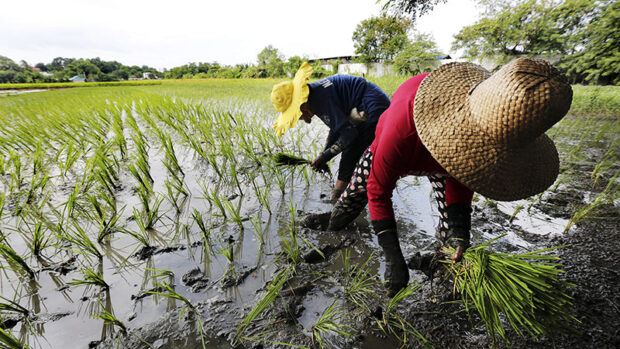
MANILA, Philippines — The Department of Budget and Management (DBM) released a total of P455.58 million for the Rice Competitiveness Enhancement Fund (RCEF) intended for the operating requirements of the program and to aid local rice farmers.
According to DBM in a statement on Tuesday, Budget Secretary Mina Pangandaman approved the release of the fund to the Department of Agriculture (DA) and other Government-Owned and -Controlled Corporations (GOCCs) to support the Rice Enhancement Competitiveness Program (RCEP) and “improve the productivity and competitiveness of local rice farmers and increase their income.”
READ: Bill seeks to extend life of rice tariff funds
“In our quest for food security for all under President Ferdinand R. Marcos Jr.’s vision of Bagong Pilipinas, we will continue to support programs that boost the local production of major agricultural commodities, including rice, which is a staple food in almost every Filipino household,” Pangandaman said.
The total funding consisted of the Notices of Cash Allocation (NCAs) amounting to P23.79 million released by the DBP to cover the DA’s operating cash requirements and P431.79 million distributed to other GOCCs and RCEP implementing agencies, such as the Land Bank of the Philippines, the Development Bank of the Philippines, and the Philippine Rice Research Institute (PhilRice), with PhilRice receiving the highest amount of over P178 million.
Pangandaman explained that the release of the funds is part of DBM’s continuous support for programs that “boost the local production of major agricultural commodities,” especially rice in the country.
READ: Use excess RCEF fund to aid rice farmers — Bongbong Marcos
Republic Act 11203, which provides for the creation of RCEF, indicates the automatic credit of an annual appropriation of P10 billion in the next six years from the approval of the Act — sourced from tariff revenues collected from rice imports.
Under Republic Act 11203, 50 percent of the fund is automatically allocated as in-kind grants to eligible farmers’ associations, cooperatives, and local government units for rice farm equipment, and 30 percent is designated for the development and promotion of inbred rice seeds, organizing farmers into seed growers’ associations, and seed production.
Furthermore, 10 percent is provided as low-interest credit facilities for farmers and cooperatives, and the remaining 10 percent supports extension services by PhilMech, PhilRice, ATI, and TESDA for training in rice crop production, modern farming techniques, seed production, mechanization, and technology transfer. — Barbara Gutierrez, INQUIRER.net intern